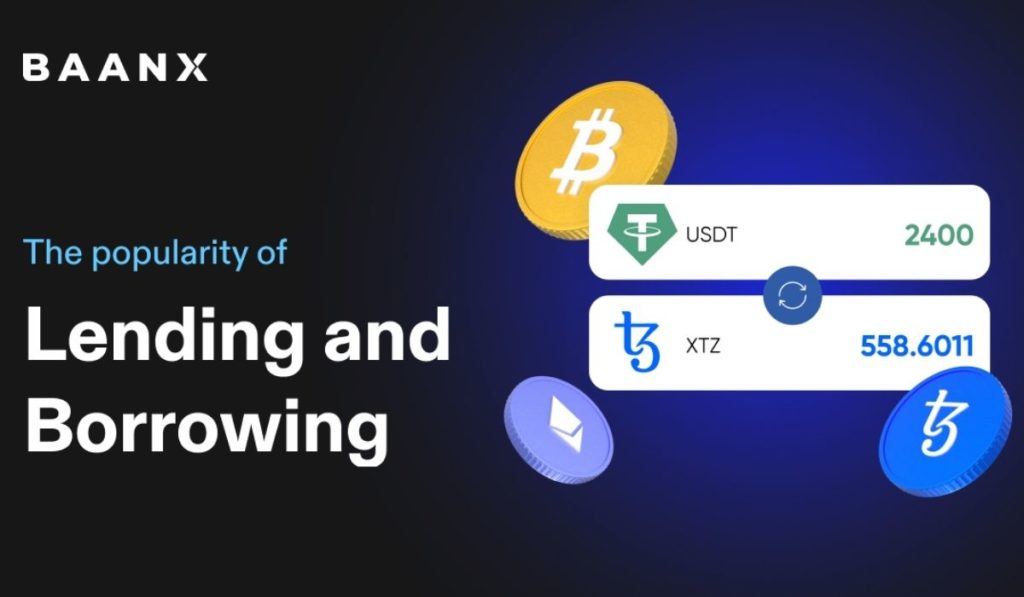
2022-4-29 20:22 |
One of the biggest advantages of cryptocurrencies is that they can provide financial services to the unbanked. According to Forbes, there are over 1.7 billion people across the globe who don’t have a bank account. A majority of the people who do have access to a bank are subjected to the measures taken by these financial institutions which seem to cater exclusively to the rich.
Over the last year, the Total Value Locked (TVL) in decentralized finance (DeFi) projects has jumped from $62 billion to $213 billion, according to Defi Llama data. This represents close to a 250 percent boost in under a year. An estimated 400,000 BTC could already be in use as collateral in the lending market today.
A lot of this growth is driven by the fact that DeFi services have made staking, lending, and borrowing seamless and accessible to anyone across the globe. Although there are numerous centralized crypto services that are in the space of lending, DeFi proves to have the decentralized aspect that a lot of users in the space look for.
What is crypto lending?Crypto lending is a lender loaning crypto, usually stablecoins, to a crypto-owning borrower and securing said loan by taking a security interest over the borrower’s digital assets. The collateral is kept until the borrowed amount is paid back, or the digital assets can be liquidated to recover the sum. When the borrower’s collateral falls below a certain value, they are required to top it up to the necessary level to avoid liquidation. The collateral is returned to the user once the borrowed sum is returned.
Additionally, there are services that provide collateral-free loans known as flash loans, which you must pay back within the same transaction. If they fail to do this, the lending transaction is reversed before it has the chance to be finalized.
The popularity of crypto loansOne of the biggest advantages of cryptocurrency lending is that the borrower doesn’t have to undergo a credit check to qualify to borrow the stablecoins. Essentially, crypto loans are given to anyone who can provide collateral making them easier to acquire than a loan from a traditional financial institution. Lenders can be your average crypto user who can drop their crypto in a vault and begin earning APY without having to manage the loan themselves.
Currently, the top three DeFi lending protocols are Anchor (on the Terra blockchain), AAVE, and Compound (both Ethereum-backed), with a total of $33.12 billion of TVL in the lending space. DeFi projects provide a decentralized mechanism for crypto lending although there always exists the risk of users having no way to confirm the legitimacy of a lending protocol. Smart contracts can still be hacked and these issues are becoming more prevalent today. This is where fintechs like Baanx play the pivotal role of not only bridging DeFi and traditional financial services but also providing a more secure and regulated way of borrowing crypto with their Cryptodrafts.
One of the primary features of Baanx is that they allow their users to get interest-free loans based on their crypto holdings with up to 50% LTV instantly on BTC or ETH holdings. The advantage of lending in this manner is that users have the ability to hold their crypto while borrowing against it. Baanx is now also bringing this reliable form of crypto borrowing to their upcoming CL card powered by Ledger, where Ledger users using the card will be able to borrow against their crypto directly from their Ledger Nanos. This essentially creates the most secure way to borrow crypto to date, with Baanx providing a regulated product and integrating it with Ledger.
Baanx aims to tap into the untapped potential of digital assets. With partnerships with other industry-leading companies like Tezos, Baanx seeks to bridge traditional fintech services over to DeFi with smarter and more efficient models but also maintaining a form of regulation in order to provide the safest product to their users.
origin »Donationcoin (DON) на Currencies.ru
|
|


























